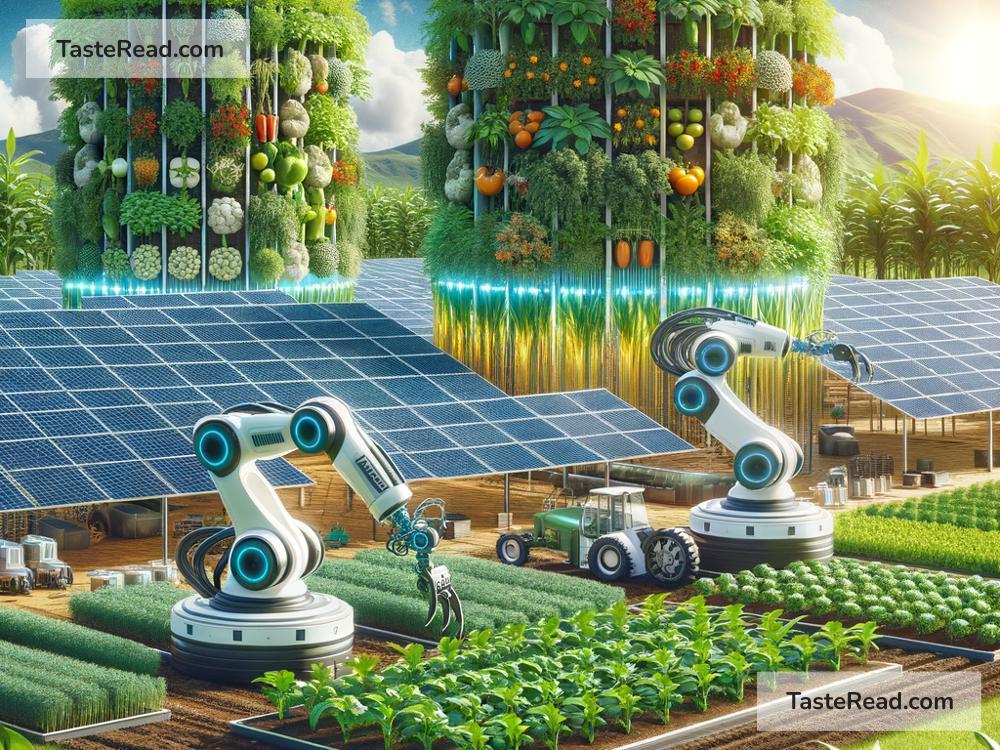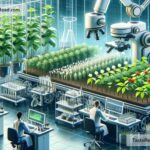The Future of Regenerative Agriculture: Growing Food While Healing the Planet
If you’ve ever thought about where your food comes from, you’ve probably heard of terms like “organic farming” or “sustainable agriculture.” But in recent years, there’s been a growing movement that goes even deeper: regenerative agriculture. This way of farming doesn’t just aim to avoid harming the environment—it focuses on actively improving it. So, what’s in store for the future of regenerative agriculture? Let’s explore this exciting field and what it could mean for farmers, the planet, and all of us.
What Is Regenerative Agriculture?
Regenerative agriculture is a system of farming that works with nature instead of against it. Traditional farming methods often degrade the land over time. For example, tilling the soil, using chemical fertilizers, and monoculture farming (where only one type of crop is grown) can weaken soil health and harm ecosystems. Regenerative agriculture flips the script by focusing on practices that rebuild soil, improve biodiversity, and help combat climate change.
Some key principles of regenerative farming include:
- Building Healthy Soil: Farmers use techniques like composting and cover cropping to boost soil fertility naturally.
- Reducing Chemical Use: Instead of relying on synthetic fertilizers and pesticides, regenerative farming encourages natural solutions, like using beneficial insects to keep pests under control.
- Rotating Crops and Raising Livestock Together: Mixing crops and animals helps restore nutrients in the soil and reduces waste.
- Protecting Water Resources: Regenerative farms focus on reducing water waste and preventing chemical runoff into rivers and lakes.
- Fighting Climate Change: By improving soil health, regenerative agriculture helps store carbon underground, reducing greenhouse gases in the atmosphere.
These methods not only lead to healthier ecosystems but also produce nutritious food for people to eat.
Why Is Regenerative Agriculture Important?
Farming the way we do today often takes a toll on the planet. For example, soil erosion, loss of biodiversity, and pollution are major challenges linked to conventional agriculture. The situation is urgent—scientists estimate that we might lose much of the world’s farming soil in the next 60 years if we don’t change our ways. Plus, agriculture contributes to about 10% of global greenhouse gas emissions, which worsen climate change.
Regenerative agriculture offers hope. Instead of depleting resources, it regenerates them, leaving the environment in better shape than before. Healthier soil leads to better crops and more resilient food systems. Plants grow stronger and can better withstand extreme weather, like floods or droughts, which are becoming more common due to climate change. Regenerative methods also help farmers save money by reducing their need for expensive chemical inputs, making farming more sustainable economically.
The Future of Regenerative Agriculture: A Growing Movement
Regenerative agriculture is still a relatively new concept for many people, but it’s growing in popularity. Farmers, researchers, activists, and companies are all playing a role in shaping the future of this movement. Here are some trends that point to how regenerative agriculture could evolve in the years ahead:
1. More Farmers Joining In
One exciting trend is the increasing number of farmers embracing regenerative practices. While it takes time to transition from conventional methods, many farmers are realizing the long-term benefits of healthier soil and crops. Financial incentives, like government programs that reward sustainable farming, are helping motivate farmers to make the switch.
2. Advances in Technology
Technology will be key in expanding regenerative agriculture. For example, drones and sensors can help farmers monitor soil health and water usage more efficiently. AI tools might assist in planning crop rotations or analyzing data to maximize yields while protecting the environment. As tech continues advancing, regenerative farming can become easier and more accessible for farmers of all sizes.
3. Research and Education
The future will also rely on spreading knowledge. Universities and organizations are already conducting studies on regenerative practices. For instance, they’re exploring which techniques work best in different climates and regions. Schools and programs teaching regenerative farming methods could help more young farmers adopt these innovative ideas.
4. Support From Big Companies
Big food companies are getting onboard with regenerative agriculture, too. Many brands understand that consumers want food that’s grown responsibly. Companies like Nestlé, General Mills, and Patagonia are investing in regenerative projects and encouraging their suppliers to adopt sustainable practices. This could lead to larger-scale changes in the food system.
5. Climate Action
Regenerative agriculture is gaining attention for its ability to fight climate change. Scientists have shown that improving soil health can store significant amounts of carbon in the ground, reducing the overall level of greenhouse gases. Governments and organizations focused on climate action are likely to boost support for regenerative efforts in the future.
Challenges on the Horizon
While the future of regenerative agriculture looks promising, there are challenges to overcome. Farmers often need time and money to switch their practices, and not all regions have access to the necessary resources. Educating consumers about what regenerative agriculture really is—and why it matters—is also important. When more people understand its benefits, they’re likely to demand food that supports the planet, creating a ripple effect throughout the system.
A Healthier Planet Is Possible
Regenerative agriculture is more than just a farming method—it’s a way to reconnect with the Earth and ensure that future generations have access to healthy food and a thriving environment. As the movement grows, it has the potential to transform agriculture into a force for healing the planet rather than harming it. By working together—farmers, companies, scientists, and everyday people—we can create a food system that nourishes both people and the world around us.
So, as you shop for groceries or think about how food arrives at your table, consider how regenerative agriculture is paving the way for a more sustainable future. The idea isn’t just about growing food; it’s about growing hope, one farm at a time.


